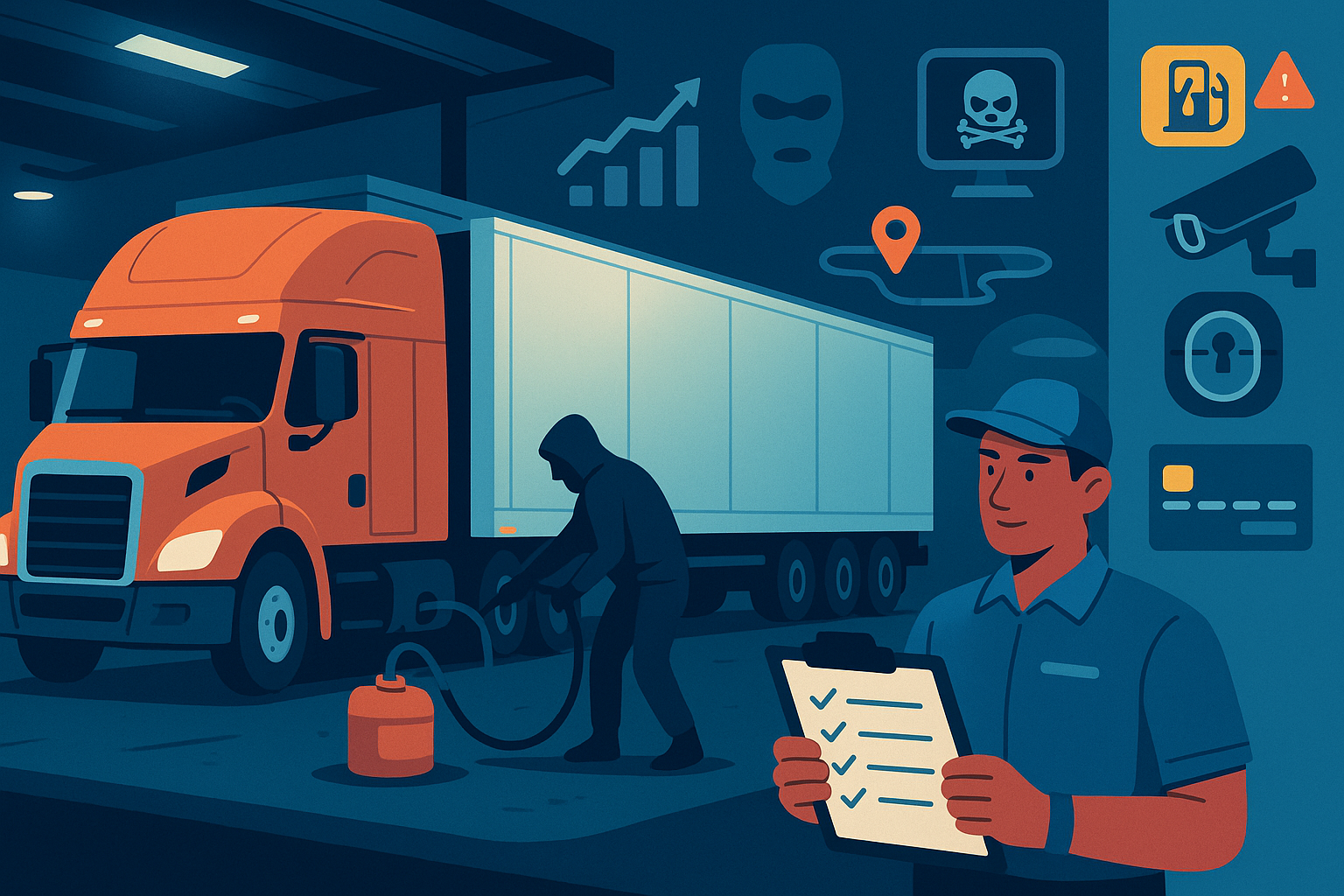Fuel theft is an increasingly costly challenge for the cargo freight industry. Beyond the immediate financial loss, stolen fuel can disrupt delivery schedules, increase operational risk, and impact overall supply chain efficiency. Understanding the trends driving fuel theft and adopting proactive measures is critical for fleet managers and logistics professionals.
Current Trends in Fuel Theft
- Rising Incidents Across the U.S. and Globally
According to industry reports, fuel theft incidents have been steadily increasing, particularly at unsecured truck stops, depots, and during long-haul transit. The growth of diesel prices has further incentivized opportunistic theft.
- Targeted Theft of High-Value Cargo Vehicles
Trucks carrying high-capacity fuel tanks or specialized cargo are increasingly targeted. Theft patterns often correlate with vehicle type, route visibility, and stop frequency.
- Organized Crime and Opportunistic Theft
Fuel theft is no longer just random opportunistic acts. Some thefts are organized, with coordinated operations targeting specific fleets or routes, sometimes using insider knowledge.
- Technology-Enabled Theft
Fuel thieves are using increasingly sophisticated methods, from magnetic siphons to hacking telematics and fuel management systems. This has prompted the industry to adopt more advanced anti-theft technologies.
Proactive Measures to Protect Against Fuel Theft
- Install Fuel Monitoring Systems
Modern telematics and IoT sensors allow real-time monitoring of fuel levels and usage. Alerts can be triggered for unusual drops in fuel, helping fleet managers act quickly.
- Use Secure Fuel Storage and Access Control
At depots and terminals, restrict access to fuel storage with locks, surveillance cameras, and authorized personnel policies. Limiting who can refuel vehicles reduces the risk of internal theft.
- Route Planning and Risk Assessment
Analyze routes for high-risk areas based on historical theft data. Plan refueling stops in secure, monitored locations and consider convoy strategies for vulnerable shipments.
- Fuel Cards and Digital Authentication
Implement secure fuel card programs with unique driver authentication. Digital authorization ensures fuel purchases are traceable, reducing misuse or diversion.
- Driver Training and Awareness
Drivers should be trained to recognize suspicious activity, safeguard fuel caps, and report anomalies immediately. Awareness campaigns within fleets can significantly reduce opportunistic theft.
- Regular Audits and Data Analysis
Conduct fuel audits and analyze consumption trends. Sudden discrepancies in fuel usage can indicate potential theft, allowing proactive intervention before losses escalate.
Looking Ahead
As fuel prices fluctuate and theft methods become more sophisticated, prevention requires a combination of technology, process controls, and driver engagement. Companies that proactively monitor fuel usage, secure access points, and analyze risk data are best positioned to protect assets and maintain operational efficiency.
Bottom line: Fuel theft isn’t just a nuisance—it’s a preventable risk. By combining modern monitoring technologies, smart operational policies, and proactive driver engagement, freight companies can minimize losses, safeguard shipments, and strengthen their overall supply chain security.

